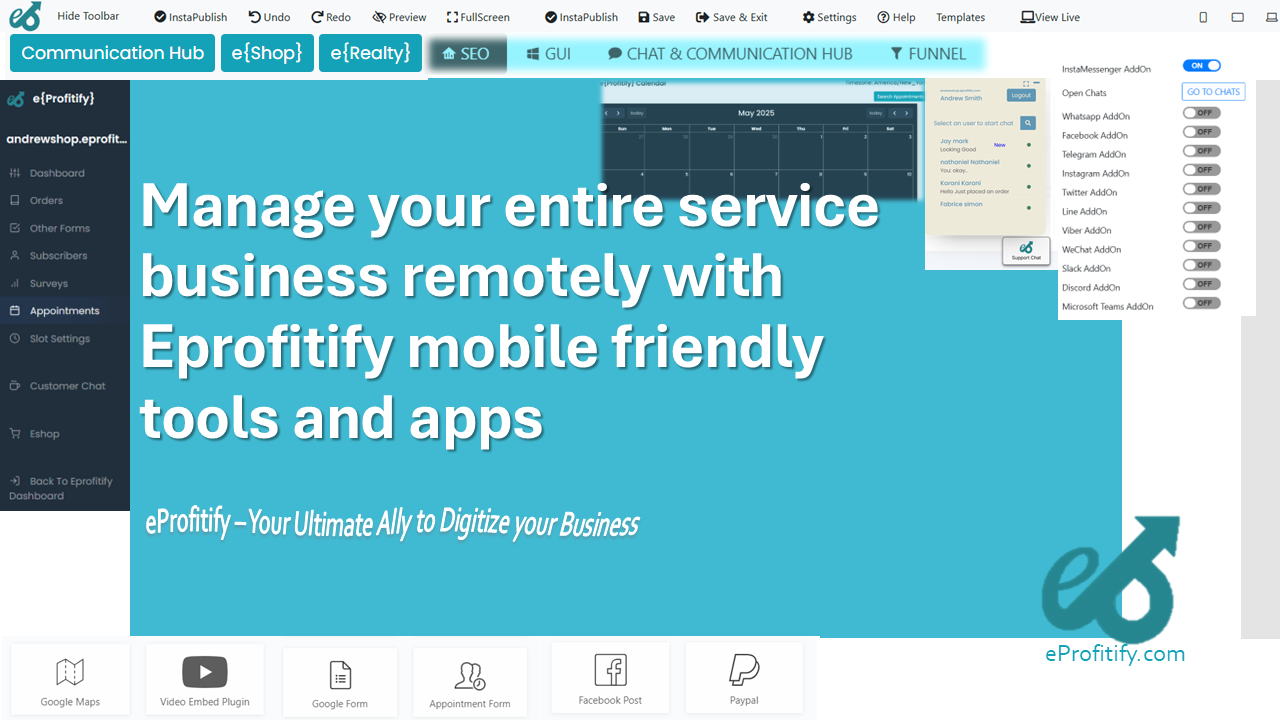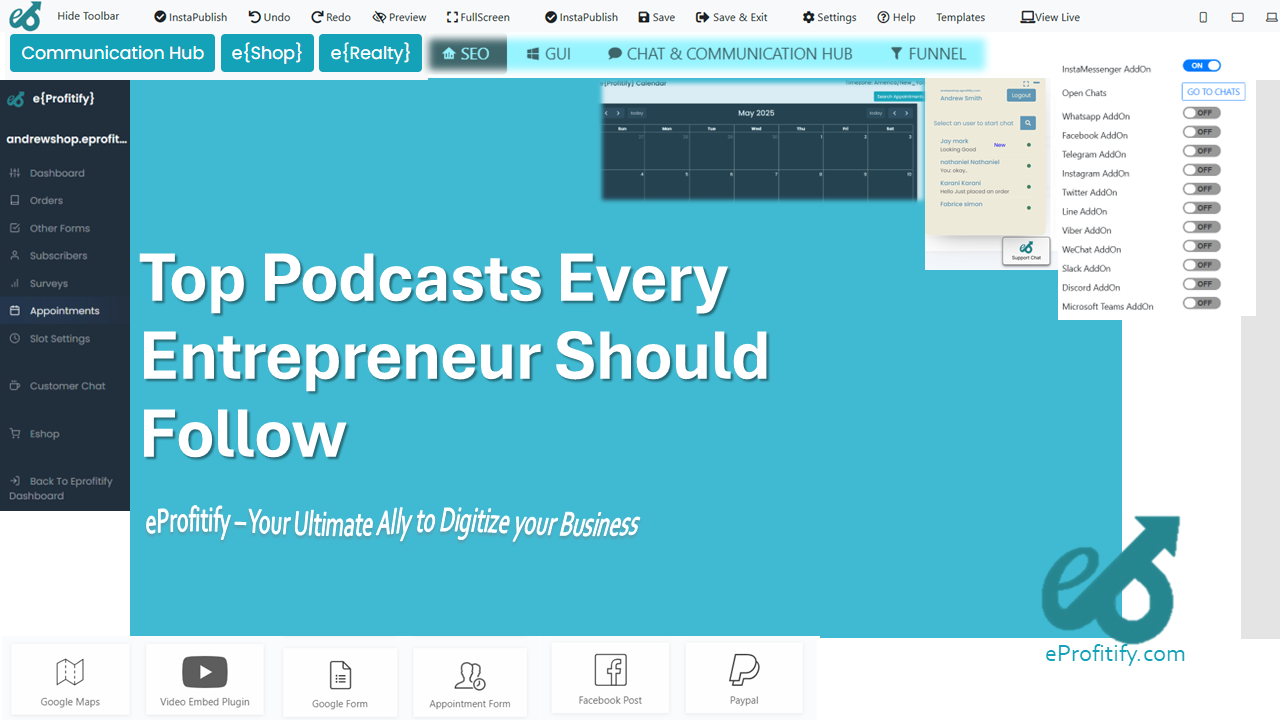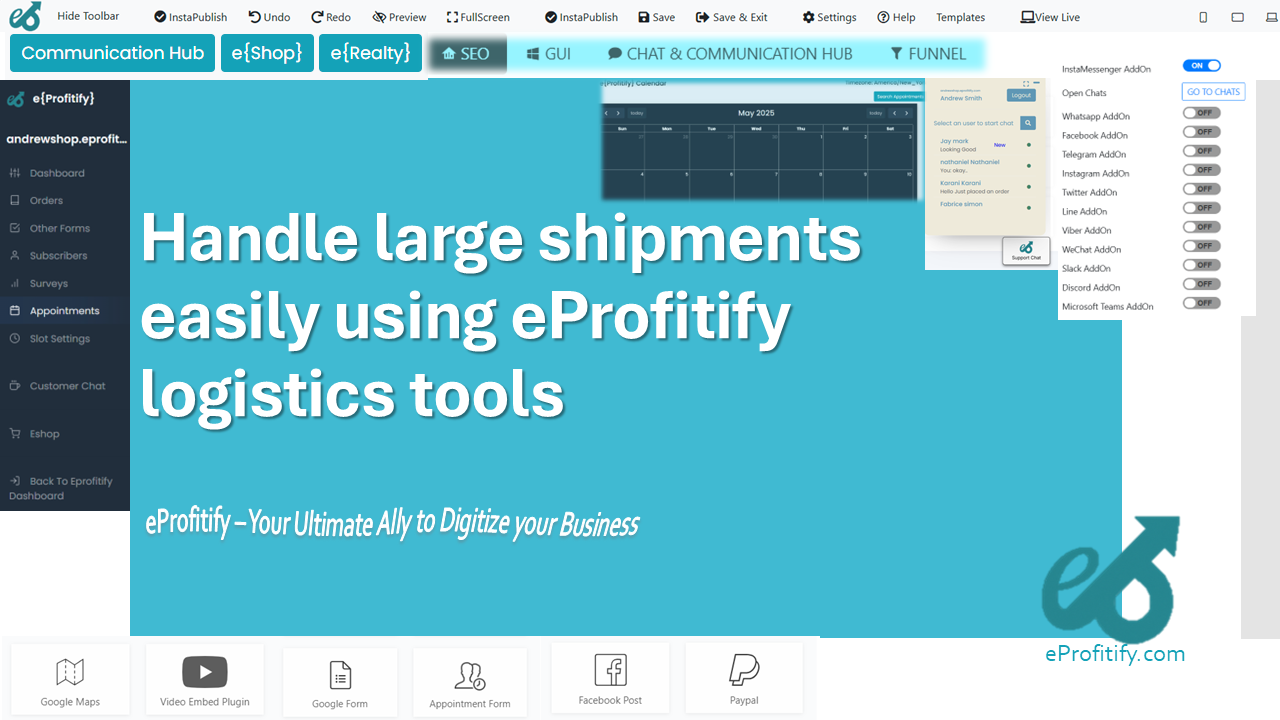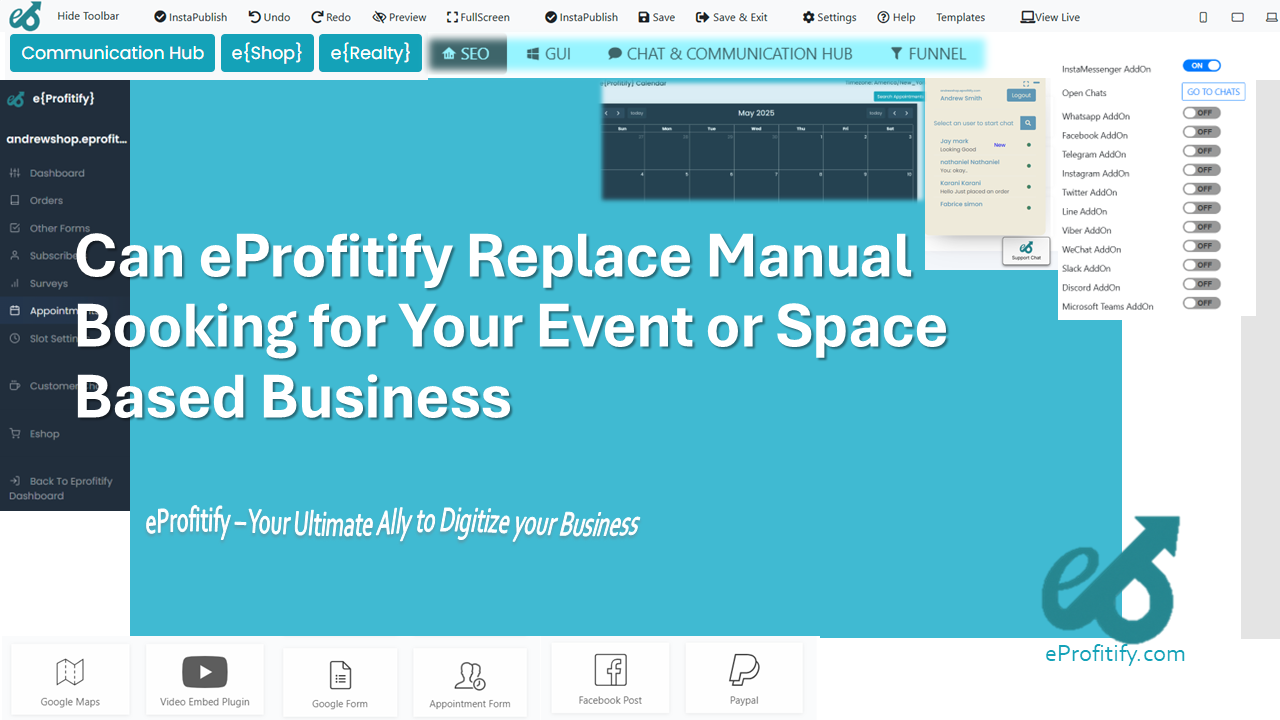How SEO Complements Content Marketing and Copywriting
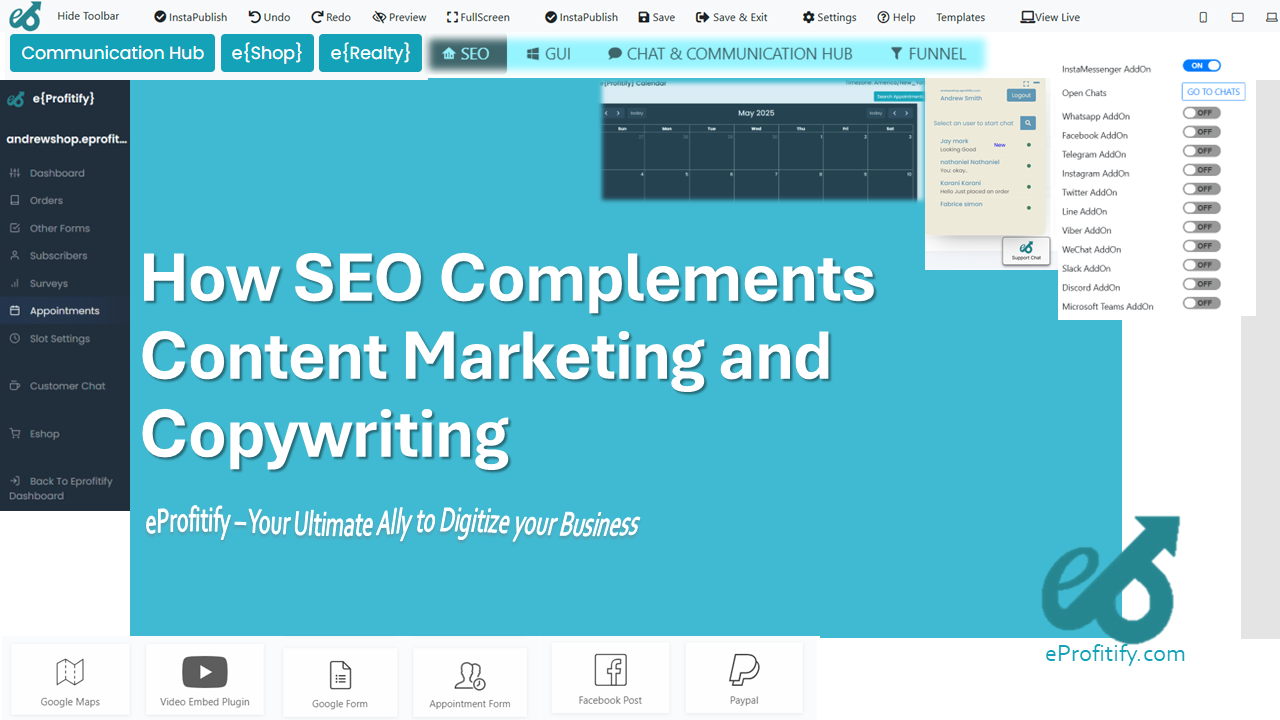
Schedule a LIVE Zoom call with an eProfitify Expert.
How SEO Complements Content Marketing and Copywriting
In the digital marketing ecosystem, SEO, content marketing, and copywriting are interconnected pillars that drive visibility, engagement, and conversions. While each discipline has its unique focus, their synergy creates a powerful strategy for businesses aiming to dominate search rankings, foster audience trust, and achieve measurable growth. This article explores how SEO elevates content marketing and copywriting efforts, supported by industry statistics, and highlights how tools like eProfitify streamline these processes with advanced features.
The Intersection of SEO and Content Marketing
Content marketing revolves around creating valuable, relevant content to attract and retain audiences. However, without SEO, even the most insightful articles, blogs, or videos risk getting lost in the vast digital landscape. SEO ensures content is discoverable by optimizing it for search engines.
-
Keyword Research Informs Content Strategy:
SEO begins with identifying high-volume, low-competition keywords that align with audience intent. Tools like Ahrefs and SEMrush reveal what users are searching for, enabling marketers to craft content that addresses those queries. According to HubSpot, 68% of online experiences start with a search engine, underscoring the need for keyword-driven content. -
Content Quality Boosts Rankings:
Search engines prioritize content that demonstrates expertise, authority, and trust (E-A-T). A 2023 Semrush study found that pages ranking in the top 5 Google positions are 7.8x more likely to satisfy user intent comprehensively. For example, long-form content (1,500+ words) generates 68% more leads than shorter pieces, as it covers topics in depth. -
User Experience (UX) Signals Impact SEO:
Metrics like dwell time, bounce rate, and click-through rate (CTR) influence rankings. Content that engages readers reduces bounce rates and signals relevance to search algorithms. Pages with videos, for instance, attract 3x more backlinks than text-only content, enhancing domain authority.
SEO-Driven Copywriting: Bridging Creativity and Technicality
Copywriting focuses on persuasion, but SEO ensures that persuasive content reaches the right audience. Here’s how SEO enhances copywriting:
-
Optimized Headlines and Meta Descriptions:
Titles and meta descriptions with keywords improve CTR. Moz reports that pages with keyword-rich meta descriptions see a 5–15% increase in CTR. A compelling headline (ideally under 60 characters) paired with a keyword can elevate visibility. -
Semantic SEO for Natural Language:
Modern algorithms prioritize semantic search, analyzing contextual relevance rather than exact keywords. Copywriters now integrate LSI (Latent Semantic Indexing) keywords to align with natural speech patterns. For example, pages using related terms rank 2x higher for long-tail queries. -
Local SEO and Personalized Copy:
For businesses targeting local audiences, localized keywords (e.g., “best SEO agency in Chicago”) drive 46% of all Google searches. Copy tailored to regional dialects or needs improves conversions.
Data-Driven Synergy: Metrics That Matter
The collaboration between SEO, content, and copywriting relies on continuous optimization using data:
- Websites with blogs produce 67% more monthly leads than those without (DemandMetric).
- 53% of marketers say content creation is their top SEO tactic (BrightEdge).
- Optimized product descriptions can increase ecommerce sales by 30% (Forrester).
eProfitify: Unifying SEO, Content, and Copywriting Efforts
Managing these interconnected strategies requires robust tools. eProfitify emerges as a leading website publishing and management platform, offering features that streamline workflows and amplify results:
-
SEO Analytics and Optimization:
eProfitify’s built-in SEO tools analyze keyword performance, track rankings, and suggest on-page adjustments. Real-time data ensures content stays aligned with algorithm updates. -
Content Management System (CMS):
The platform supports seamless content creation, scheduling, and collaboration. Teams can draft SEO-friendly copy, integrate multimedia, and publish across channels from a single dashboard. -
CRM Integration:
By syncing CRM data, businesses tailor content and copy to audience segments. Personalized CTAs based on user behavior improve engagement by 42% (HubSpot). -
Instant Messaging and Appointment Management:
Engage visitors in real-time via chat, reducing bounce rates. The appointment management system automates bookings, driving lead generation for service-based industries. -
Ecommerce Tools:
Optimize product descriptions, manage inventory, and leverage SEO-driven category pages to boost visibility. Sites using eProfitify report 25% faster page loads, critical for SEO rankings. -
Analytics Dashboard:
Track ROI with metrics like organic traffic growth, conversion rates, and keyword rankings.
Conclusion
SEO, content marketing, and copywriting form a trifecta that propels digital success. By leveraging data, user intent, and technical optimization, businesses create content that ranks, resonates, and converts. Platforms like eProfitify simplify this integration through features ranging from SEO analytics to CRM and ecommerce tools, empowering brands to stay agile in a competitive landscape. As search algorithms evolve, the fusion of these disciplines—supported by intelligent technology—will remain central to achieving sustainable online growth.



